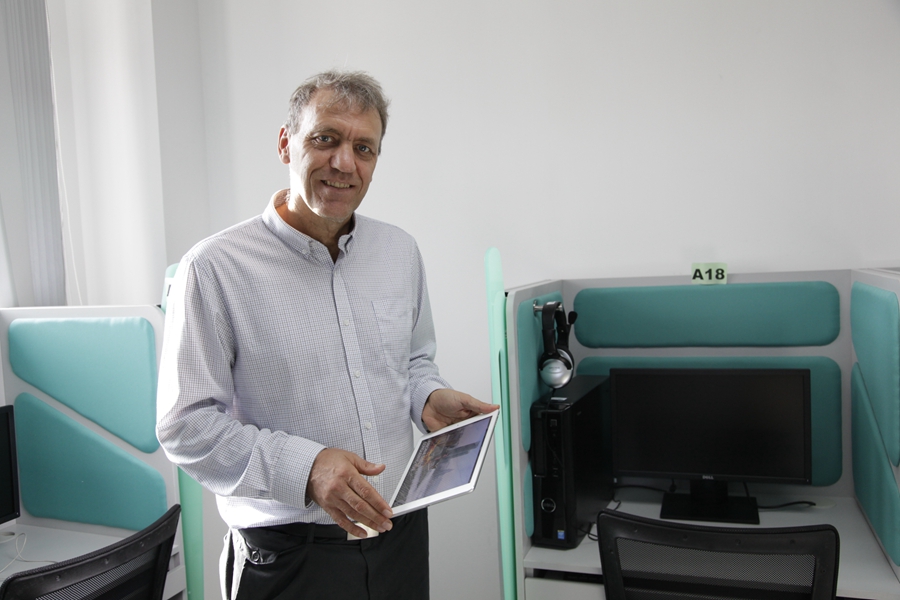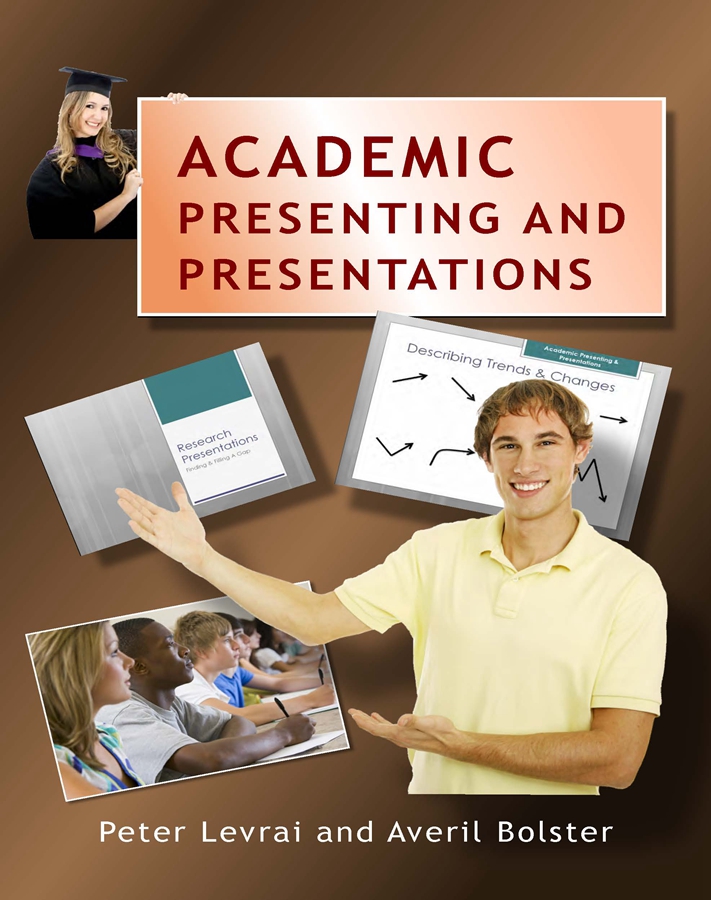Today various innovations are appearing across the global higher education landscape. More and more lecturers strive to integrate technology into classroom instruction to create a more comprehensive learning experience. Instructors from the University of Macau English Language Centre (ELC) have created diverse resources to facilitate and develop students’language and academic skills. Their commitment to, and strategies for, enhancing learning quality, have led to their nomination for the English Language Teaching Innovation Awards (ELTons).
‘The British Council needs teachers who are confident in dealing with technology,’says the director of studies of the British Council, when discussing the role of technology in the future of language learning. ‘You are either into technology or you are in the way and had better start looking for a new job.’ Jay Bidal, a senior instructor from the ELC, has introduced a novel and creative technology for teaching the English language. Bidal was shortlisted for the ELTons 2016 in the Digital Innovation category as the co-author of the Connections E-textbook – a project he worked on for two years with his counterparts from Zayed University in Abu Dhabi. In a new era of learning with mobile devices, Bidal believes now is the time to reflect whether the current curricular and pedagogical approaches are congruent with the learning styles of the younger generation.
Making a Difference
Bidal aims to create a satisfying digital learning experience that is distinct from a print textbook. He notes that publishing companies usually invest a great deal of money into the content and layout of print textbooks and thus they are reluctant to make substantial changes in the digital form. ‘The appearance and learning progression of their e-textbooks nearly duplicate those of their print counterparts, especially when online exercises, the answers for which almost always accompany print textbook packages, are factored in. The result is that there is little room for change and innovation in design to further learning goals beyond what paper textbooks are capable of achieving.’
Therefore, Bidal has studied design choices incorporated in a university foundation programme—e-textbook for tablets, with a focus on how e-textbooks can better facilitate collaboration and communication among students by folding project-based learning into their design. ‘More investigation needs to be done into this area of e-textbook design and how best to differentiate it from traditional paper textbook design to increase student acceptance of this relatively new mode.’
Novel Approaches
One of the advantages of the Connections E-textbook is that instructions appear only when students want or need to read them, or when teachers direct them to do so. As Bidal observes, text-based instructions are nearly unavoidable in print textbooks, and normally their digital counterparts have largely followed suit. This is despite the fact that learners do not always read them, because either there is no need, or teachers deliver instructions orally in class. Therefore, in the e-textbook, the principle of ‘embeddedness’ is applied to keep instructions from appearing on all pages. Instructions are embedded within the headings of all activities, and revealed only when the headings are touched on the screen.
‘Such an approach gives instructors flexibility in how to deal with instructions for an activity. They can simply talk learners through an activity, or they can direct students to touch the heading and open and read the instructions,’ says Bidal. ‘This has the added effect of helping them to focus immediately on what is being asked of them, instead of the usual situation where such instructions are “lost” among the rest of the text on the page.’ Occasionally, instructions are given through a short video for the sake of variety and maintaining interest.
Also, chatrooms can be set up in Connections for students to answer questions in class, which can generate more instant responses and interactions than can be generated by simply asking questions. ‘I see a much wider range of opinions compared to getting two or three students to answer the questions in class – sometimes 20 or more students are putting their ideas out there,’ says Bidal. ‘It helps to encourage students to express themselves.’
Independent Learning
Developing students into independent learners is one of the goals of Connections E-textbook. As opposed to conventional ways of learning, which may focus on memorising information and rely heavily on rote assignments, the e-textbook helps students to learn how to discover information and apply it properly. The e-textbook contains videos which demonstrate a screencast with instructors explaining a certain paragraph in the text so that students can watch them at home. During the class, students will learn how to use the information from the e-textbook to generate new information for essays, reports, and presentations. ‘Students can access the materials themselves and learn from the cues embedded in the e-textbook, which could encourage self-regulated learning in and out of the classroom,’ says Bidal.
Innovation for Skills in Demand
Nothing paralyses students more than having to present a research project or give an oral defense. Fortunately, it is possible to improve such performance. Peter Levrai and Averil Bolster, both senior instructors from the ELC, have created a unique research-based training course called ‘Academic Presenting and Presentations (APP)’, designed to help students cultivate academic presentation skills. They were also shortlisted for ELTons Award 2016 in the Innovation in Learner Resources category as authors of APP.
Levrai and Bolster have taught English for more than 20 years in general, corporate, and academic contexts in Turkey, Azerbaijan, Portugal, Vietnam, and mainland China. In their opinion, an academic presentation involves more than entertaining the audience, mastering the pitch, or achieving an impact with every sentence the speaker delivers.
‘No matter how confident and fluent you are in the way you talk, if you can’t manage to articulate the important aspects of your research, such as methodology or analysis, your presentation is still considered a failure,’ says Levrai. ‘It’s not so much about language – well, language does help, obviously – but that’s not the first thing that lecturers look for. Exhibiting good and well-organised information is the key.’
Academic-oriented Context
APP deals with the various presentation tasks that students may be expected to fulfil as part of their university studies. According to Levrai and Bolster, the instructional and practice material is suitable for an international audience and may be used in a wide variety of contexts in the fields of communication skills, English language teaching, and English for academic purposes. The course also prepares students to cope with broader topics of interest in a study-oriented context, such as research and plagiarism.
The course content emphasises achievement of higher-level tasks rather than focusing merely on discrete language skills, as their teaching experience reveals that this is the area most students find especially difficult. Levrai notes that each unit of APP focuses on a different presentation genre, building the students’ awareness of how to present effectively, as well as meeting the specific requirements of an academic environment.
‘It’s all about the skills, or expertise, of exhibiting noteworthy information in a well-organised manner orally that meet the common set of expectations for academic presentations,’ Bolster says.
A New Field to Build Expertise
Bolster and Levrai are both determined to build expertise in an arena which is currently only a ‘small market’, and therefore has not received the attention they feel that it deserves. ‘Most of the textbooks are too focused on exam preparations, language learning, building vocabulary or writing, but not much about oral presentations,’ says Bolster. ‘There are only a handful of textbooks elaborating on this topic, so it’s a growing area.’
Academic oral presentations are just as important as written essays or research papers. ‘Your instructors or lecturers expect you to deliver a well-organised speech based on your works and that should be in an academic format, properly referenced and without any logical fallacies,’ says Levrai.
As far as Levrai is concerned, the teaching materials currently available on the market focus more on public speaking than academic presentations. ‘The resources are unlikely to facilitate the learning of skills and techniques a student needs to fulfil the requirements of presenting academic papers,’ says Levrai. ‘The materials regarding presentation skills are not as widespread as those on writing. Therefore, we try to make a difference.’
Stay Hungry for Ideas
Innovation is no longer at the periphery of language teaching; it is at its core. Integrating new teaching methods and technologies into classrooms is vital to enriching students’ learning experience. ‘We strive to look beyond what we do well today, searching for the brilliant ideas of tomorrow and putting them into practice,’ says Levrai.





